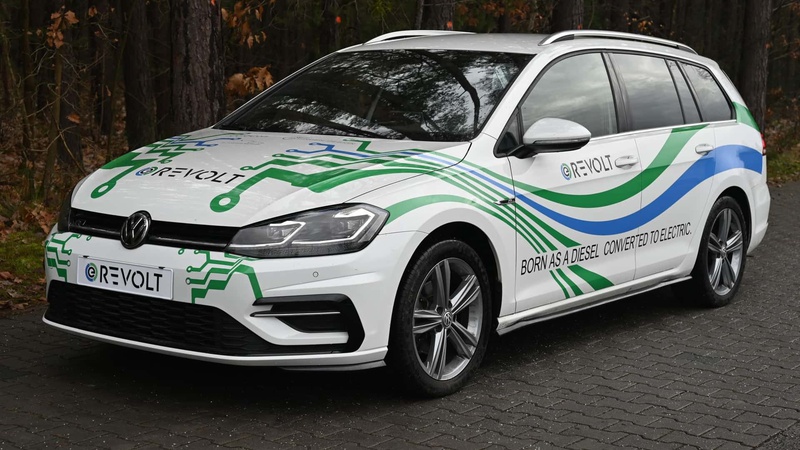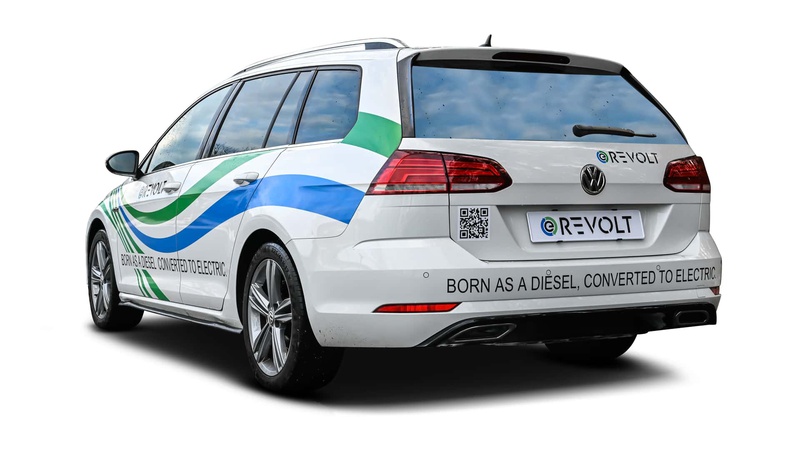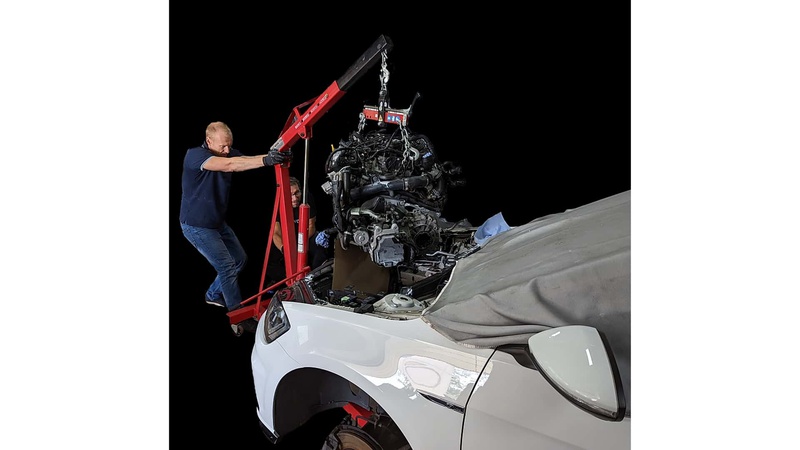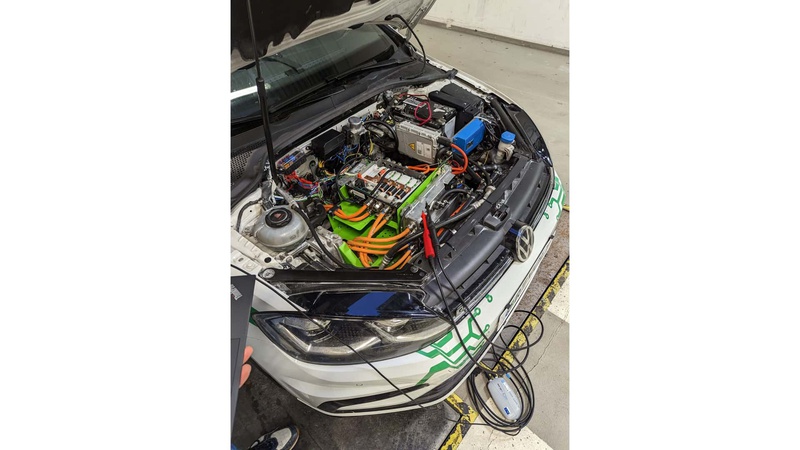While most internal combustion-to-EV conversion companies specialize in high-end classic cars, e-Revolt is targeting mainstream models. On the example we can see Volkswagen Golf VII wagon, which had a diesel engine before it was replaced by electric parts. The company's managing director and technical director, Rolf Behling, told Euronews Next that the conversion is currently compatible with up to 42 different models.
It costs between 12,000 and 15,000 Euros. It's certainly not cheap, especially if you're spending the money on an existing car. On the other hand, truly cheap EVs are still few and far between in 2023, so this conversion might make sense for eco-conscious people who can't splurge on a new EV.





e-Revolt Internal Combustion to EV Conversion
e-Revolt claims the battery has enough capacity for 250 to 300 kilometers (155 to 186 miles). The company is still improving the technology, so there's definitely room for more. Because the bolt-on conversion kit is modular, a car that has already undergone the conversion can switch to a future upgraded battery when it becomes available.
The conversion process begins with a pre-check of the car to make sure it's eligible for the electric treatment. After that, the internal combustion engine is removed, along with the rest of the components that are no longer needed. The startup doesn't throw the old parts in the trash, but either recycles them or reuses them in other applications.




e-Revolt Internal Combustion to EV Conversion
After making room in the engine bay, e-Revolt installs what it calls a "plug and play frame" that hooks into the mounting points originally created to hold the gas/diesel engine. There's also an e-CAN (Controller Area Network) module that makes sure the newly added parts work in harmony with the car's original components.
The company supplies everything needed to complete the conversion, including hoses and screws. It also adds a new infotainment-like setup on the dashboard that provides all the EV-related information.
It's unclear how much power the electric motor will deliver, and we don't know the capacity of the battery. We also don't know how long it will take to recharge, and we're sure that the conversion will increase the car's weight and affect its distribution. As a result, the suspension will have to support a heavier load.
Source: Euronews Next
.jpg)
